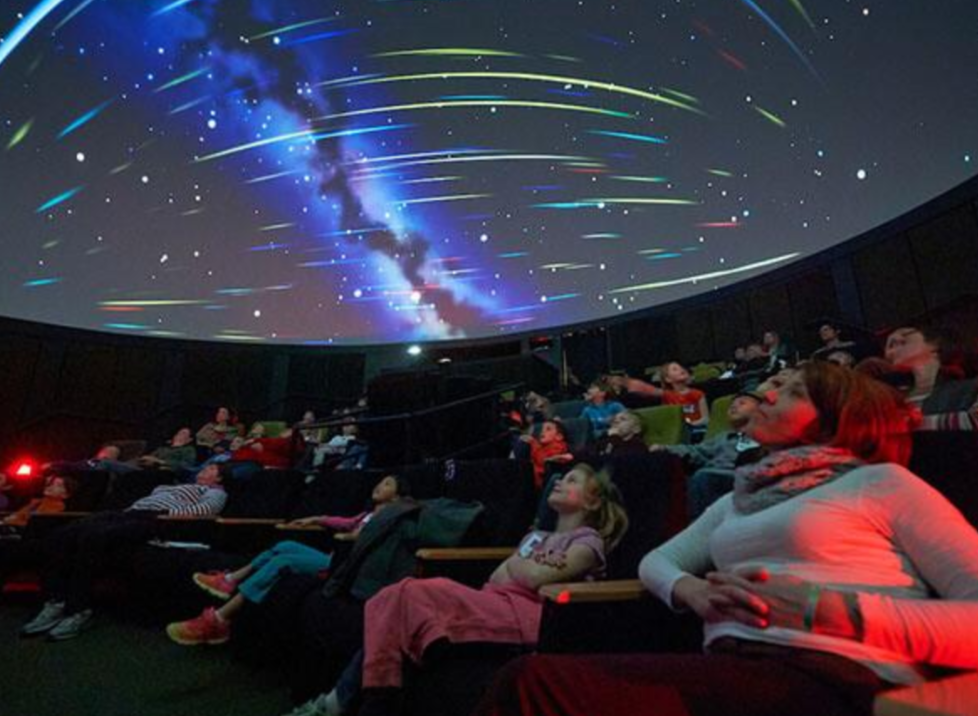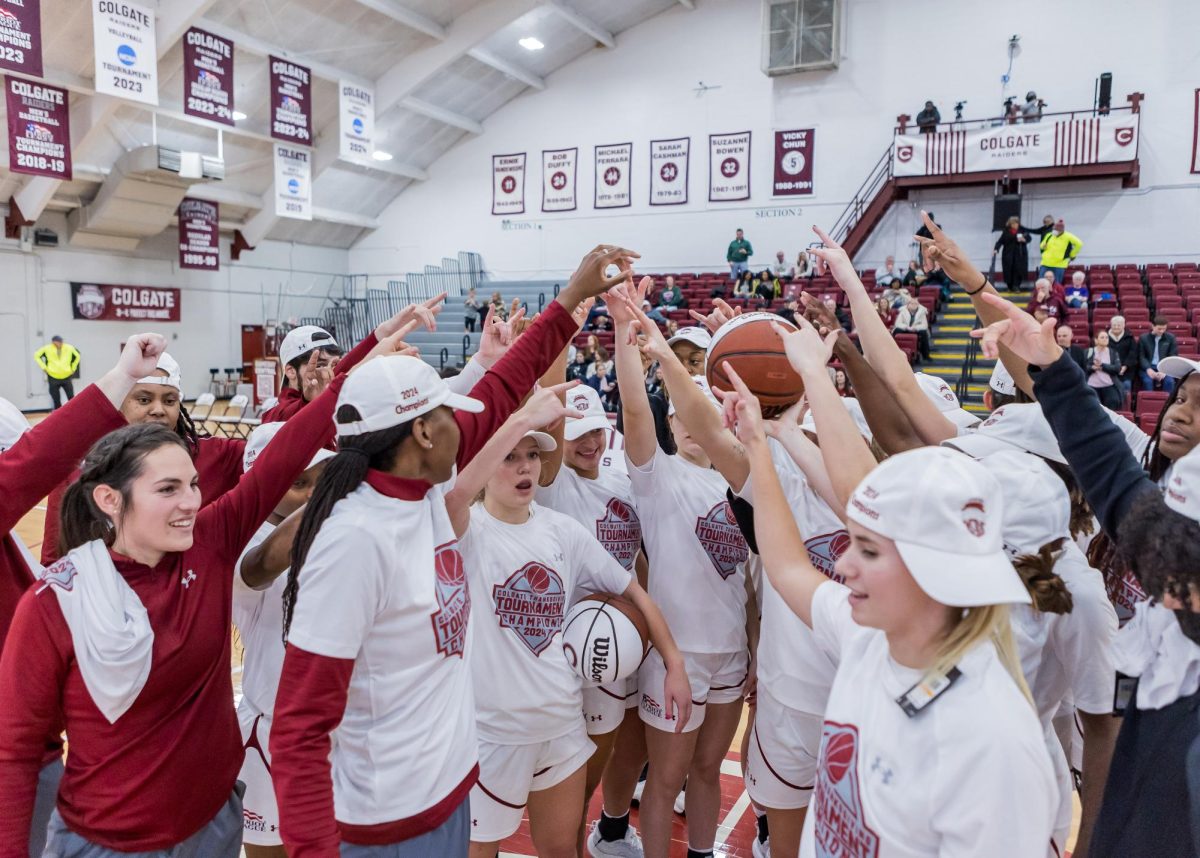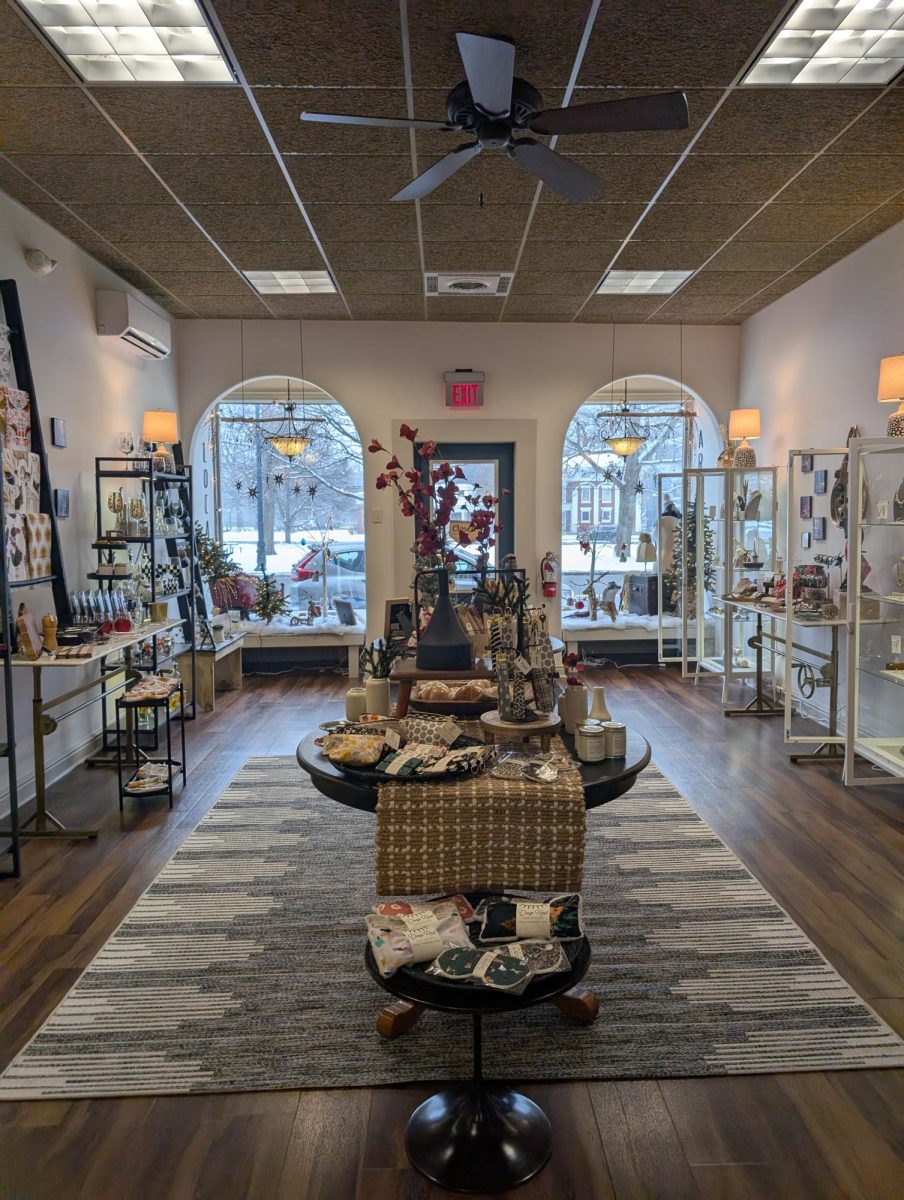Located on the fourth floor of the Robert H.N Ho Science Center, the Ho Tung Visualization Lab (Vis Lab) is truly something extraordinary. Walking through the doors, finding a spot in one of the 59 seats and looking up to see that blank white dome fosters a sense of anticipation and excitement for what’s to come.
Opened in 2008 and named after Sir Robert Ho Tung, Robert H.N. Ho’s grandfather, the lab has been a great addition to Colgate University. Students and members of the community can engage with and become truly immersed in the cosmos, ancient buildings and travel through many more places.
Technical Director Joe Eakin has been working in the Vis Lab for 15 years and has been in the planetarium business for 24 years. He manages the Digistar 7 system, which is the cutting-edge projection technology that makes the events at the Vis Lab possible. That same Digitstar system has been used in many many major planetariums, such as the Adler Planetarium in Chicago, Illinois. Eakin also leads a team of Colgate students who work on curating new shows and experiences for the lab.
Working in the Vis Lab since its beginning, Eakin has worked to expand the Vis Lab’s audience by working with faculty and other outreach programs.
“We’ve prided ourselves, especially early on, on saying we want this space open for everyone and have worked with faculty and many departments to do so,” Eakin said. “We have classes, public shows and have started an outreach program. We bring a couple thousand kids every year for free who might not normally have access to a university or major science programs and provide immersive learning experiences. Their grades range from K-12. We actually just had a small group of sixth graders from a town that’s way up near Old Forge, N.Y., come up yesterday, and they loved it.”
For Eakin, the Vis Lab has been a very full-circle experience.
“There was a student who graduated last year from Colgate who came when she was in second grade and actually worked in the Vis Lab, which was really cool to see that impact firsthand,” Eakin said. “And we have even more students who visited when they were young, currently working in the Lab.”
Associate Professor of Anthropology Santiago Juarez has not only used the Vis Lab as an engaging tool in his courses, but also as a way to further his research findings.
“I’ve used the Vis Lab in the past to actually travel through my spaces or my research sites in virtual form. We have this tool called LiDAR (Light Detection and Ranging) that’s able to scan through the rainforest and erase the canopy, but this is the only tool that really allows me to understand the scale of that space in virtual form,” Juarez said. “Even though I can see things from a bird’s-eye view on a flat screen, actually walking through these places and traveling through these mountain temples gives me a new sense of what to look for and has actually led to new discoveries.”
Sophomore Ean Hill is currently in Juarez’s ANTH 103 class, titled “Intro to Archaeology.” Hill explained why he enjoyed his class experience in the Vis Lab this past Friday.
“It’s much better than watching just a simple movie in class because the graphics do immerse you into what you’re learning and draw you in,” said Hill. “It’s very similar to a play, I would say, because it puts you into that sphere. That’s something I always enjoy about the Vis Lab, and I think it’s a very excellent tool for research and learning.”
If you’re looking for something to do during the week, go to one of the Ho Tung Vis Lab’s upcoming shows! Admission is always free, and seats are first come, first served.















